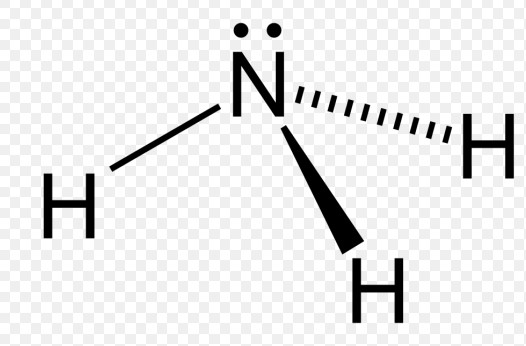Excreting nitrogenous wastes is a crucial biological process, pivotal for the survival of all organisms. These waste products, generated from the metabolism of proteins and nucleic acids, vary significantly among different species, adapting to their unique habitats and lifestyles. The distinction between ammonotelic, ureotelic, and uricotelic organisms lies in their method of handling these potentially toxic substances, a fascinating aspect of comparative physiology that highlights the diversity of life on Earth.
Ammonotelic organisms excrete nitrogenous wastes as ammonia, ureotelic organisms convert nitrogenous wastes into urea, and uricotelic organisms expel it as uric acid. Each method of excretion reflects an evolutionary adaptation to specific environmental conditions, balancing the trade-offs between water conservation and energy expenditure. This categorization not only underscores the biochemical diversity among species but also illustrates their ecological niches and survival strategies.
Understanding the differences in nitrogenous waste excretion among ammonotelic, ureotelic, and uricotelic organisms provides insight into their evolutionary adaptations, energy conservation strategies, and ecological roles. These distinctions are critical for assessing how animals survive in varying environmental conditions, from water-abundant to arid regions, and offer a window into the intricate balance between life forms and their habitats.

Nitrogenous Wastes Explained
Types of Nitrogenous Wastes
The metabolism of proteins and nucleic acids in animals results in the production of nitrogenous wastes, substances that must be effectively removed from the body to maintain health. Three primary forms of these wastes are ammonia, urea, and uric acid. Each type has different properties and implications for the organism excreting it.
Ammonia
Ammonia is a highly toxic substance and requires a significant amount of water to be safely excreted from the body. It is the most simple form of nitrogenous waste and is typically excreted by organisms that have abundant access to water, such as aquatic animals. The direct excretion of ammonia is known as ammonotelism.
Urea
Urea is less toxic than ammonia and can be concentrated to a greater extent, reducing the water needed for excretion. This compound is the result of a metabolic process that converts ammonia to a less harmful substance. Organisms that excrete urea, known as ureotelic, typically live in environments where water is more scarce than those of ammonotelic organisms.
Uric Acid
Uric acid is even less toxic than urea and ammonia, and it can be excreted as a semi-solid paste, minimizing water loss. This is particularly beneficial in arid environments where water conservation is crucial. Organisms that excrete uric acid, or uricotelic organisms, include many birds, reptiles, and insects.
Factors Influencing Waste Type
Several factors determine the type of nitrogenous waste an organism produces, including habitat, water availability, and evolutionary adaptation.
Habitat
The environment in which an organism lives greatly influences its method of waste excretion. Aquatic animals, for example, are more likely to be ammonotelic due to the abundance of water.
Water Availability
Access to water is a critical factor. In arid environments, minimizing water loss is essential, leading to a preference for uric acid excretion.
Evolutionary Adaptation
Evolution plays a role in determining an organism’s excretory process. Over time, species adapt to their environments, optimizing their excretion method to suit their survival needs.
Ammonotelic Organisms
Definition and Characteristics
Ammonotelic organisms excrete nitrogenous wastes as ammonia. This method is efficient in water-rich environments but requires a lot of energy due to the toxicity of ammonia.
High Water Habitats
These organisms typically inhabit freshwater or marine environments where diluting ammonia is not an issue due to the abundance of water.
Energy Considerations
Although ammonia is toxic and needs rapid excretion, the process is energetically cheaper compared to converting ammonia into urea or uric acid.
Examples
Aquatic Invertebrates
Many aquatic invertebrates, such as certain species of mollusks and crustaceans, are ammonotelic, taking advantage of their watery habitat to excrete ammonia directly into the surrounding environment.
Fish Species
Most fish, including both freshwater and marine species, excrete ammonia through their gills directly into the water, a process that allows them to efficiently dispose of toxic waste with minimal energy expenditure.
Ureotelic Organisms
Definition and Characteristics
Ureotelic organisms convert ammonia into urea for excretion. This method requires less water than ammonia excretion and is suitable for environments where water is less available.
Moderate Water Requirement
These organisms have adapted to environments where water is present but not as abundant, making the conservation of water through the excretion of urea an efficient strategy.
Energy Balance
The conversion of ammonia to urea requires energy, but this investment allows ureotelic organisms to thrive in a wider range of habitats than ammonotelic organisms.
Examples
Mammals
Most mammals, including humans, are ureotelic, excreting most of their nitrogenous wastes as urea. This allows them to maintain water balance and minimize water loss, which is essential for survival in varied environments.
Amphibians
Amphibians, such as frogs and salamanders, are also ureotelic. Their ability to excrete urea enables them to inhabit both aquatic and terrestrial environments during different stages of their life cycle.
Uricotelic Organisms
Definition and Characteristics
Uricotelic organisms adapt to low water environments by converting nitrogenous wastes into uric acid, which is less toxic and requires minimal water for excretion. This adaptation allows these organisms to thrive in arid conditions where water conservation is crucial.
Low Water Environments
Living in environments with limited water availability, uricotelic organisms have developed a mechanism to excrete waste that conserves as much water as possible. This ability is a key survival strategy in deserts and other arid habitats.
Energy Efficiency
Although the conversion of ammonia to uric acid is more energy-intensive than the conversion to urea, the energy cost is offset by the significant advantage of water conservation in dry environments.
Examples
Birds
Birds excrete nitrogenous wastes as uric acid, allowing them to minimize water loss. This adaptation is particularly beneficial for migratory birds that may not have consistent access to water sources.
Reptiles
Reptiles, including snakes and lizards, are also uricotelic. Their ability to excrete uric acid helps them survive in some of the most water-scarce environments on Earth.
Insects
Many insects are uricotelic, which supports their survival in varied environments. This trait is especially important for species living in dry areas or those that undergo long periods without access to water.
Comparative Analysis
Water Conservation
The method of nitrogenous waste excretion plays a significant role in an organism’s water conservation strategy. Uricotelic organisms are at a distinct advantage in arid environments, where conserving every drop of water can be the difference between life and death.
Comparison Across Types
Ammonotelic organisms require abundant water to dilute and excrete ammonia, making them suited to aquatic or moist environments. Ureotelic organisms strike a balance, requiring less water than ammonotelic organisms but more than uricotelic organisms. Uricotelic organisms, however, excel in water conservation, making them ideal for dry habitats.
Adaptations to Habitat
The adaptation of an organism’s excretory system to its habitat underscores the evolutionary pressure to optimize water use and survival in specific environments.
Energy Expenditure
The metabolic cost of converting nitrogenous wastes into ammonia, urea, or uric acid varies, reflecting a trade-off between energy expenditure and the need for water conservation.
Metabolic Cost Comparison
Producing uric acid is energy-intensive, but for many uricotelic organisms, this cost is outweighed by the benefit of significant water saving. In contrast, ammonotelic and ureotelic organisms spend less energy on waste conversion but require more water for waste excretion.
Evolutionary Perspectives
Adaptive Advantages
The evolution of different nitrogenous waste excretion methods highlights the adaptive advantages organisms gain in competing for survival in diverse environments. These adaptations are not just survival mechanisms but also influence reproductive success and species distribution.
Phylogenetic Implications
The type of nitrogenous waste an organism produces can offer insights into its phylogenetic history. Evolutionary shifts in excretion methods can indicate adaptations to environmental changes, migration patterns, or other evolutionary pressures.
Implications for Ecology and Evolution
Survival Strategies
The excretion method of an organism influences its ability to colonize new habitats, its resilience against climate change, and its interactions within ecosystems.
Habitat Colonization
Uricotelic organisms, with their superior water conservation strategies, can colonize arid and semi-arid habitats more effectively than their ammonotelic and ureotelic counterparts. This ability to exploit a wider range of habitats can lead to greater species diversity and niche specialization.
Climate Change Resilience
In the face of climate change, which is expected to increase the frequency and severity of droughts, uricotelic organisms may possess a survival advantage. Their capacity for water conservation makes them more resilient to changing environmental conditions.
Biodiversity and Ecosystem Dynamics
The variety of excretion methods across species plays a crucial role in biodiversity and ecosystem dynamics, influencing nutrient cycling and food webs.
Role in Nutrient Cycling
The different forms of nitrogenous waste contribute to the nitrogen cycle in various ways. Ammonia can be directly utilized by plants, while urea and uric acid need to be broken down by microorganisms before they become available to plants. This process influences the distribution of nutrients in ecosystems.
Impact on Food Webs
Nitrogenous wastes can also impact food webs. For example, the waste products of aquatic animals can provide essential nutrients for algae and aquatic plants, which in turn support a wider range of aquatic life, demonstrating the interconnectedness of life and the importance of waste excretion methods in maintaining ecological balance.
Frequently Asked Questions
What are nitrogenous wastes?
Nitrogenous wastes are by-products of the metabolism of proteins and nucleic acids, consisting of substances like ammonia, urea, and uric acid. These compounds need to be efficiently excreted from the body to prevent toxic accumulation, reflecting a vital aspect of an organism’s regulatory functions.
How do amphibians excrete nitrogenous waste?
Amphibians primarily excrete nitrogenous waste as urea, making them ureotelic. This method represents a balance between conserving water and minimizing energy expenditure, suitable for their often variable, semi-aquatic habitats.
Why do birds excrete uric acid?
Birds excrete uric acid because it allows them to conserve water, crucial for their high metabolic rates and often arid habitats. Uric acid is less toxic and more water-soluble than ammonia, requiring less water for excretion, which is advantageous for flight and minimizing weight.
What is the significance of excretion method in animals?
The method of excretion in animals is significant because it reflects their adaptation to environmental conditions, affecting their hydration strategies, energy conservation, and overall survival. It is a key factor in understanding biodiversity, ecosystem dynamics, and evolutionary biology.
Conclusion
The method by which organisms excrete nitrogenous waste is a testament to the intricate balance of life, reflecting a spectrum of evolutionary adaptations that ensure survival across diverse environments. The distinctions between ammonotelic, ureotelic, and uricotelic excretion highlight the complex interplay between physiology, ecology, and evolution, offering profound insights into the natural world.
In conclusion, the study of how different life forms manage their waste is more than a topic of academic curiosity; it underscores the resilience and ingenuity of life on Earth. Understanding these processes enriches our appreciation of biodiversity and the delicate mechanisms that sustain life across the planet’s vast and varied habitats.

